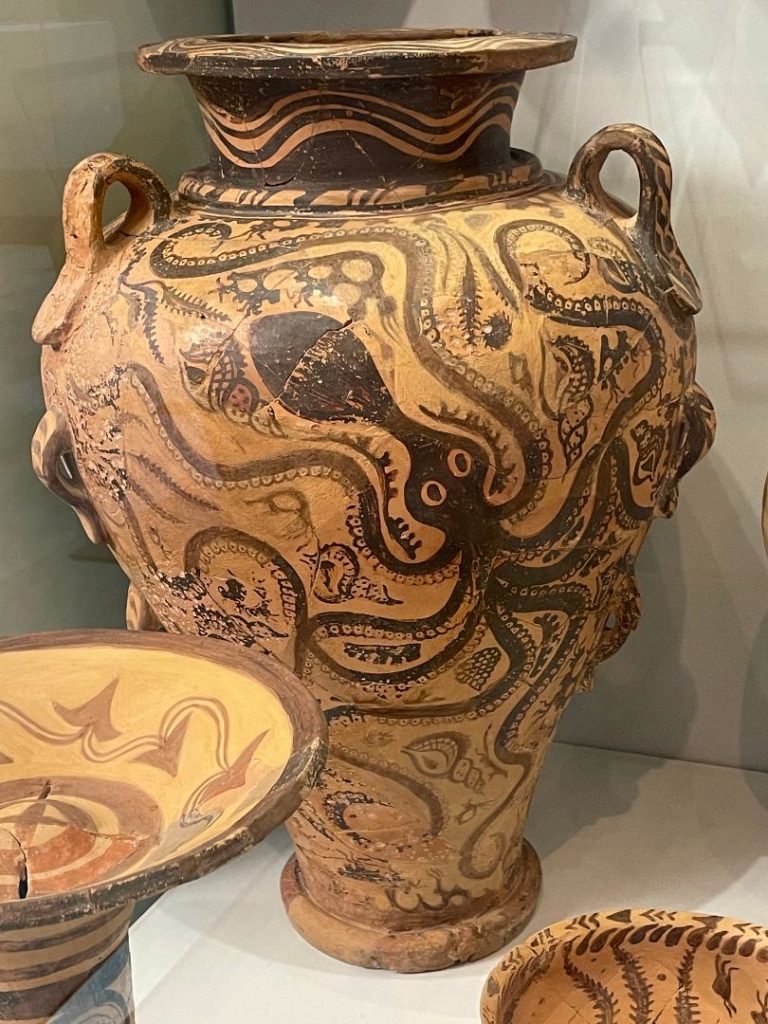
takotsubo ya Octopus pot
Matsuo Bashō (1644 – 1694)
hakanaki yume o Fleeting dreams
natsu no tsuki Beneath the summer moon
Image: Minoan octopus vase, around 1500 BC
Cultural echoes spring up tentacle-like in the most unexpected of places. Japan and Stonehenge, Japan and Knossos – who would have thought it?
This summer there have been exhibitions at Stonehenge and the Heraklion Archaeological Museum in Crete, celebrating the parallels between the marvellous Jōmon culture of Japan and these two very distant yet in surprising ways not dissimilar island cultures. I was lucky enough to visit both.
Jōmon – prosperous hunter-gatherers and the world’s first potters
Fifteen thousand years ago the world was engulfed in an ice age. Much of the earth’s water had solidified into ice and sea levels had fallen by several hundred feet. What are now the islands of Japan were part of mainland Asia, connected to present day Siberia and Korea by vast tracts of countryside, plains and hills. It was cold and stormy. Huge long-tusked long-haired ‘Naumann’s’ elephants lumbered around, along with giant deer, horses, tigers, brown bears and wolves, trailed by hardy nomadic people looking for animals to hunt and fruit and vegetables to forage.
Around 14,500 BC, long before anyone else thought of doing so (except possibly the Chinese), some of these people took to moulding the clayey soil and making it into small pots, useful for carrying grain. This was a quite extraordinary development; pots are heavy to lug around when you’re on the move. Millennia later these nomads came to be called Jōmon – ‘rope design’ – after the patterns they impressed on their pots. […]
Extract from a post on The History Girls blog, published on 6 October 2023. Read full article here.